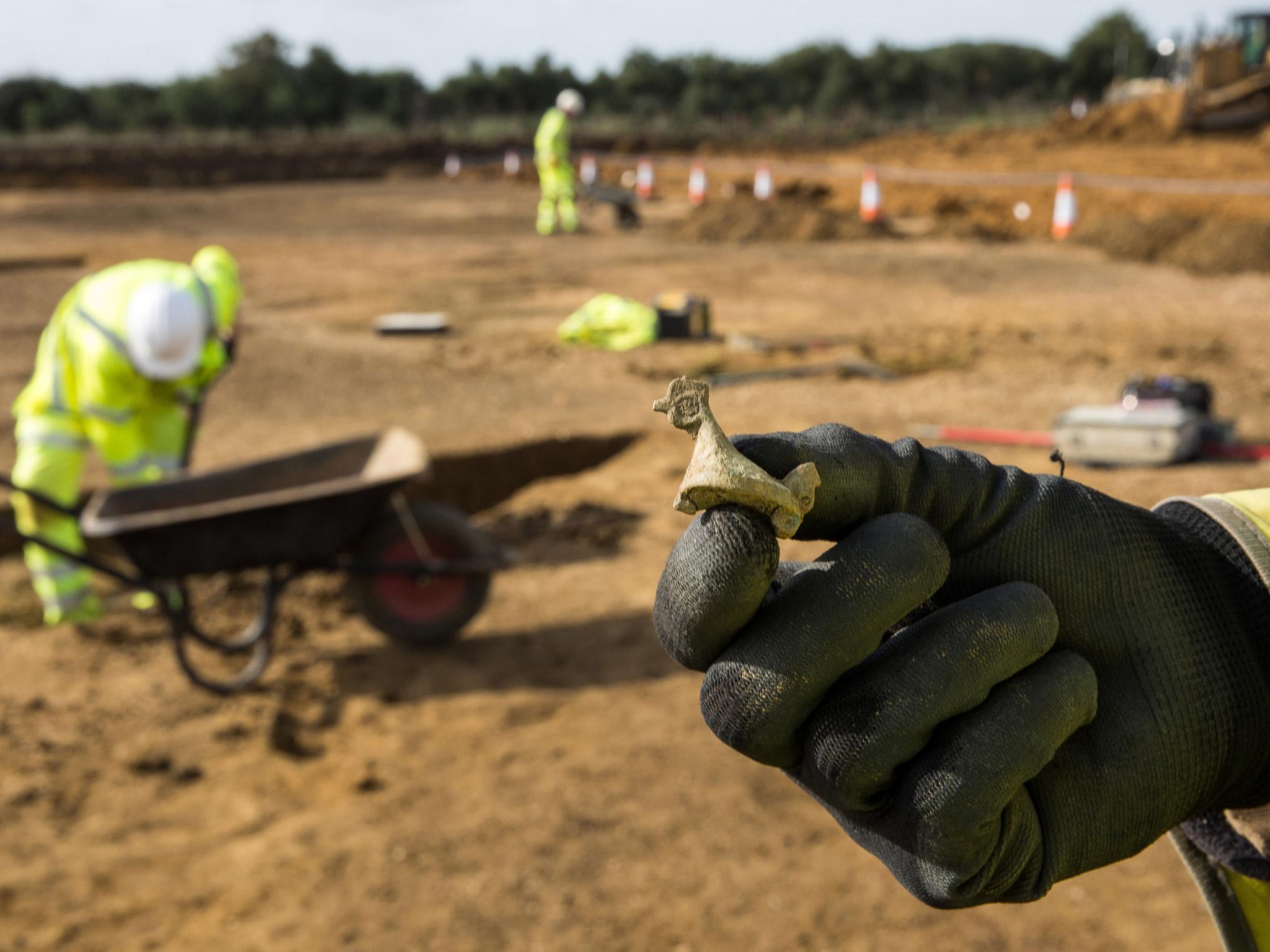Abandoned medieval village uncovered by roadworks off the A14 near Cambridge
Discoveries also included burial grounds, ceremonial monuments and a selection of artefacts

An abandoned medieval village thought to have been occupied from the eighth to the 12th centuries has been uncovered by workers upgrading a major road near Cambridge.
Archaeologists have been brought in to investigate the vast site measuring about 350 hectares, as part of works to the A14.
The team of over 250 people have made a wealth of discoveries including the remains of a 12th-century village, 12 medieval buildings, up to 40 Anglo Saxon timber buildings, alleys winding between houses, workshops and agricultural buildings.
They also discovered seven prehistoric burial grounds, eight supply farms dated between the Iron Age and Roman times, two post-medieval brick kilns, three Saxon settlement sites and 40 Roman pottery kilns.
Other major findings were three 50-metre henge monuments, thought to have been used for ceremonial gatherings.
A Roman trade distribution centre was also found. It is believed this was vital for the region's supply chain and was linked to the surrounding farmsteads by trackways, as well as the main Roman road between Cambridge and Godmanchester.
Further historic artefacts included a rare Anglo Saxon bone flute from the fifth to the ninth century, the head of Medusa on a pendant, a Middle Iron Age timber ladder and artefacts found relating to the Roman army.
Archaeologists led by MOLA (Museum of London Archaeology) Headland Infrastructure, who have dug more than 40 separate excavation areas across the site, believe their work will help to understand how the Cambridgeshire landscape was used over 6,000 years of occupation.
Neolithic monument discovered on the A14
Show all 10The team, which has battled through cold and wet weather throughout the work so far, has expressed excitement at the array of discoveries.
Dr Steve Sherlock, archaeology lead for the A14 Cambridge to Huntingdon project for Highways England, said: "The archive of finds, samples and original records will be stored so that the data and knowledge is preserved for this and future generations."
Kasia Gdaniec, senior archaeologist for Cambridgeshire County Council, said the archaeology programme had exposed an "astonishing array of remarkable new sites that reveal the previously unknown character of ancient settlements across the western Cambridgeshire clay plain".
She said: "The fast-paced archaeological excavations have been extremely challenging, especially during this relentlessly wet winter, but a very large, hardy team of British and international archaeologists successfully completed sites in advance of the road crews taking over to build the road structures.
"There is still more to do, but we want to share the archaeologists' excitement over what they are finding with the wider public and hope that they will enjoy the ongoing displays and interpretation that will be a legacy of this national infrastructure project."
The archaeologists hope to finish their work by summer.
The project is all part of a £1.5bn scheme to improve the 21-mile section of road between Cambridge and Huntingdon, overseen by Highways England.
Additional reporting by Press Association.
Subscribe to Independent Premium to bookmark this article
Want to bookmark your favourite articles and stories to read or reference later? Start your Independent Premium subscription today.

Join our commenting forum
Join thought-provoking conversations, follow other Independent readers and see their replies